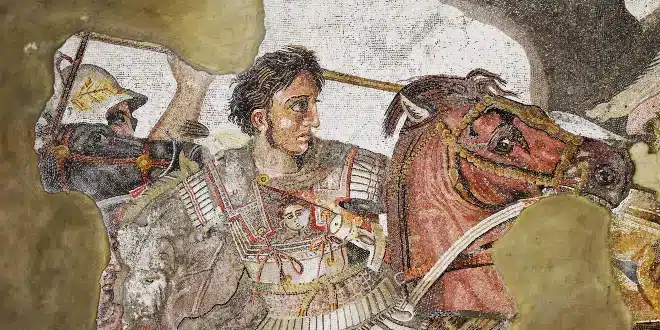An international team of archaeologists, led by Antonis Bartsiokas from Democritus University of Thrace, has made an extraordinary discovery in the Royal Tombs at Vergina, Greece, unearthing a piece of cloth believed to be Alexander the Great’s tunic.
In a study published in the Journal of Field Archaeology, Bartsiokas details the findings around this purple and white tunic. His team has also identified the remains of three individuals buried at the historical site, where previous studies confirmed that many of Alexander’s family members were interred.
Upon revisiting the site’s three tombs, labeled Tombs I, II, and III, the team found the tunic in Tomb II. Testing through gas chromatography and Fourier-transform infrared spectroscopy revealed it was crafted from cotton and dyed with purple. Researchers noted that this tunic, depicted in a frieze in Tomb II, likely belonged to Alexander himself. Made entirely of gold, it also links to ancient Persian influence, as shown by the depiction of a Persian gazelle in the frieze, supporting the connection to Alexander.
Additional archaeological evidence supports the identity of the remains in the tombs. For example, a skeleton in Tomb I showed signs of thigh and leg fusion, consistent with the limp of Alexander’s father, Philip II. Furthermore, a newborn found in Tomb I strengthens the theory, as historical accounts mention only one infant, likely associated with Cleopatra, Philip II’s youngest wife.
However, the researchers have not fully interpreted the significance of Alexander’s tunic and the gold items left in the tomb, leaving questions about their exact role and symbolism.


